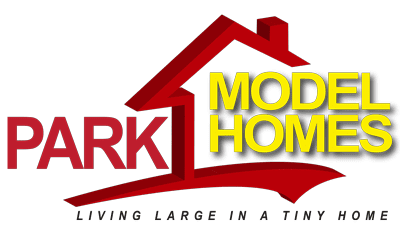There are so many reasons to move into a tiny house. Downsizing and simplifying, having a home you can move anywhere, and less cleaning and maintenance are just a few. Higher energy efficiency and a lower carbon footprint are two more big benefits. Just occupying a smaller space means you do not have to spend nearly as much on heating, cooling and electricity.
But did you know you can save even more on energy by following a few simple best practices?
Below, we go over ways you can keep energy usage to a minimum in your tiny home or park model home. These include decisions you make at the outset as well as everyday practices for energy efficiency.
How to Save on Energy Bills While Living in a Tiny House
1. Install energy-efficient lighting.
A good starting point for reducing your energy usage in a tiny house is to make sure you are using energy-efficient lights throughout your home, not old-fashioned incandescent bulbs.
LED lights are a great example. If you already have a tiny house that isn’t using energy-efficient lights, try switching to LEDs. If you are still shopping for a home, choose one that comes with LED interior and exterior lighting pre-installed.
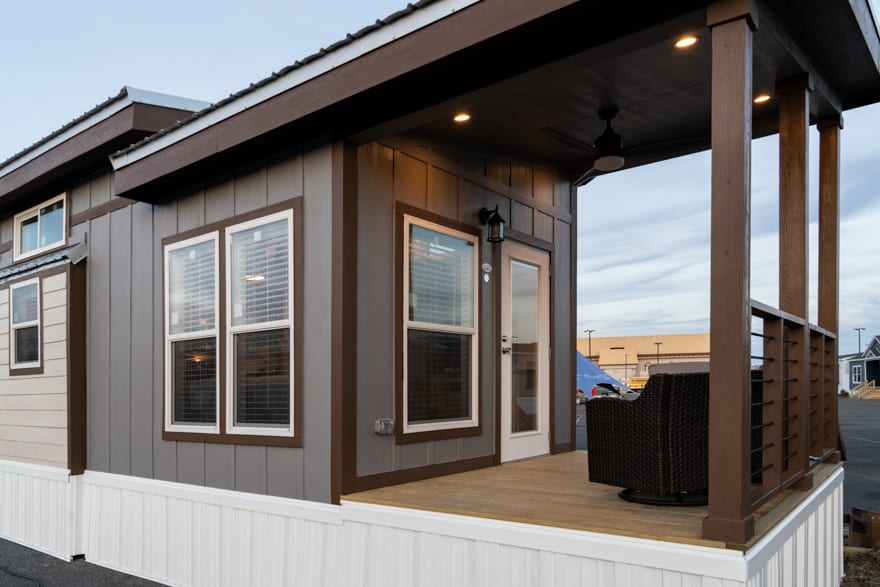
Here, you can see an example of energy-efficient porch lighting on our Athens Champion APH 527 Mono-slop model.
2. Choose a model with big windows to let in lots of natural light.
What is the most energy-efficient way to light your home? During the daytime, the answer is “sunlight.” Sunshine is free!
A model like our Woodland Park Timber Ridge Grand Tetons demonstrates the effectiveness of large windows at bringing natural light into a home:
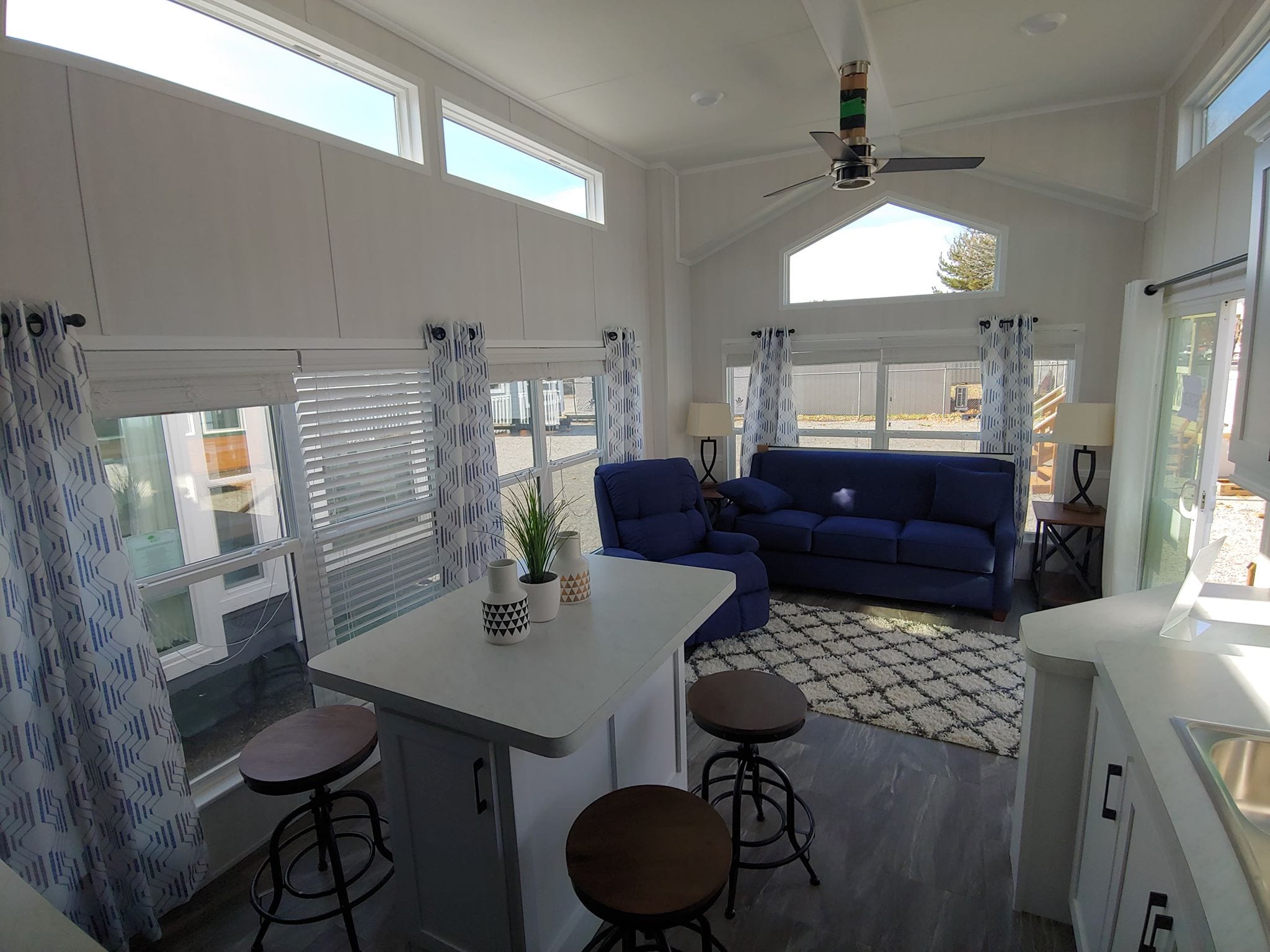
Wow! There would be no need to turn on the lights with this much sunlight streaming in.
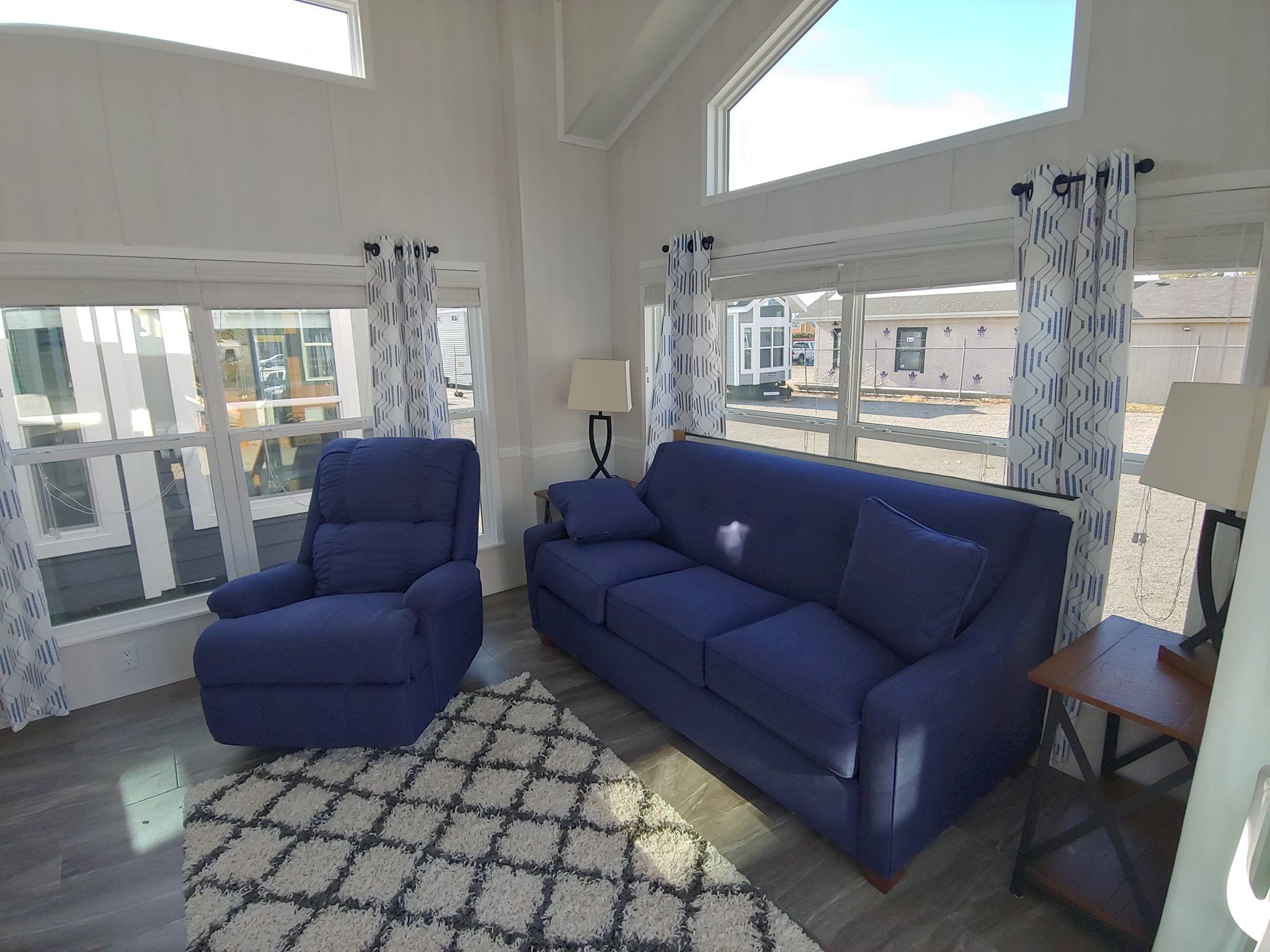
Note the long, high windows close to the ceiling. Those are called “clerestory windows.” The high placement of clerestory windows makes them highly effective at bringing in sunlight from above to flood an interior space.
That is why they are incorporated into so many of the models we sell at Park Model Homes.
3. Open your windows for a cross-breeze with a fan running.
While we are on the topic of windows, let’s talk about cooling your park model home during the summer.
Having so many large windows across from each other like those you saw in the Grand Tetons model makes it possible to open them up to create a cross-breeze. With fresh air from outdoors moving effectively through your home, you may not need the air conditioner running.
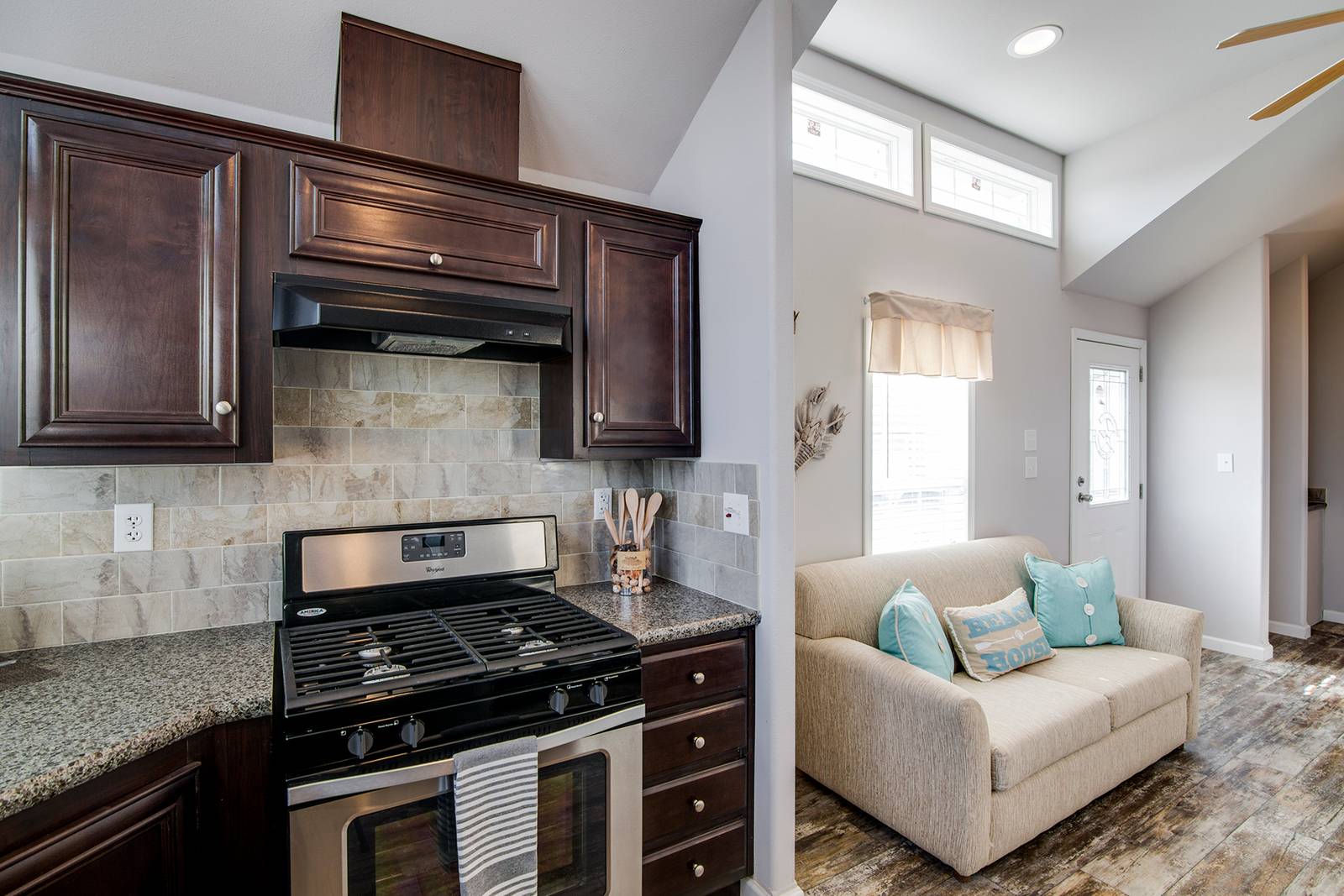
To help facilitate that air movement, you will need a high-quality ceiling fan in the sitting room. The open floor plans we offer feature a seamless flow of space between the sitting room and the kitchen, which means that air can circulate freely through both. This can be a big help when you have the stove running!
4. Pick a model with quality materials and energy-efficient construction.
The materials and features that go into the construction of your park model have a huge impact on the overall energy usage and comfort of your home.
(any exterior photo can go here)
To help regulate the temperature inside your home passively, houses by Park Model Homes include vinyl-insulated windows and a full house wrap.
5. Maintain your HVAC.
Even if you have an energy-efficient HVAC system, it is important to remember its efficiency can drop over time. If vents and filters get clogged up with dust, it will not work as well. So, do regular maintenance on it. That way, it can continue to perform at its best. You also will be extending the lifespan of the system.
6. Consider augmenting with solar power.
Another idea for enhancing the energy efficiency of your tiny house is to find a way to connect to a renewable source of power.
The easiest way you can do that is to add some solar panels to your roof or one of your exterior walls. Although solar panels represent an additional expense, over time, they should pay for themselves through the money you save on your monthly energy bills.
Plus, with climate change getting worse, power blackouts are more common than they used to be. No matter how good your HVAC system is, if the grid goes down, it can be a challenge to keep a tiny house cool on a hot summer day.
That is why it helps to have a backup source of power in the form of solar panels. Even if they do not provide enough energy for your HVAC system, you can at least keep your fans or a swamp cooler going during a blackout.
Get Your Own Energy-Efficient Custom Park Model Home
Just by moving into a tiny house from a full size home, you will significantly reduce your energy consumption. In doing so, you are saving money and helping the planet.
To maximize your savings, we have gone over recommendations for buying a park model home that is thoughtfully designed to be energy-efficient and offer you a comfortable environment in all four seasons. Moreover, you are now familiar with some practices you can follow to keep energy bills low.
Ready to get your own energy-efficient park model home? Please fill out our contact form or give us a call today to schedule your consultation.
